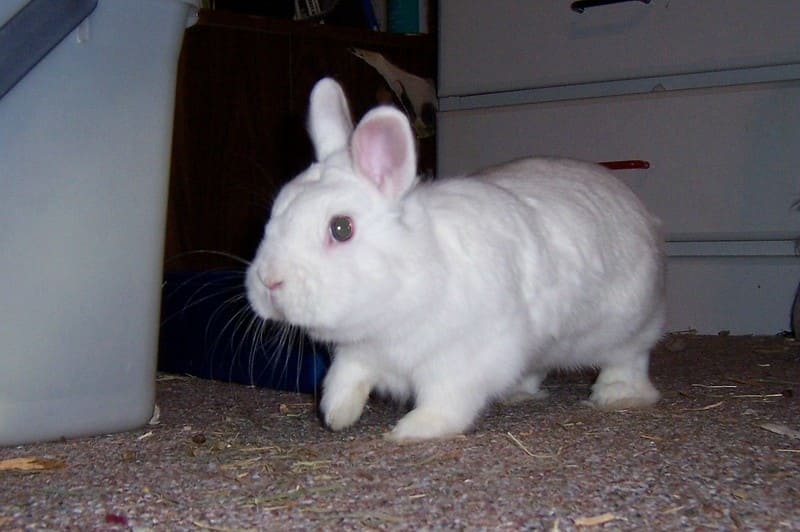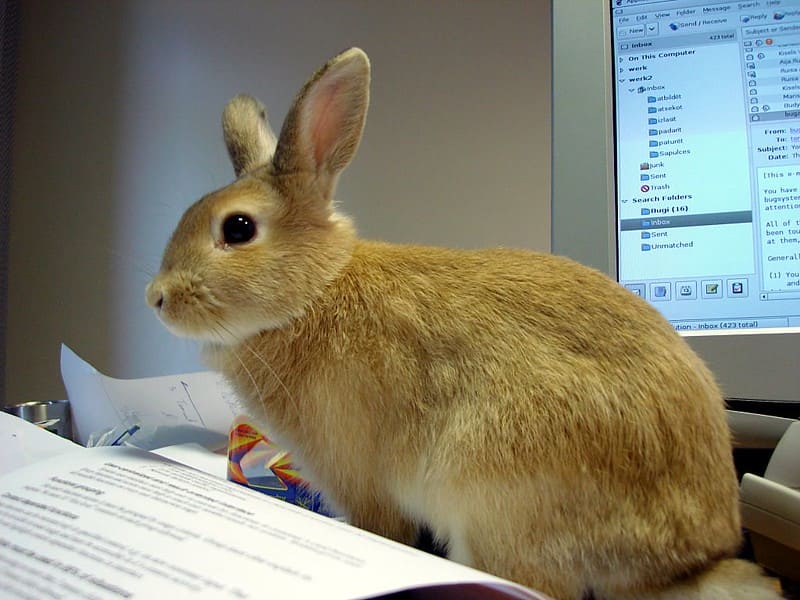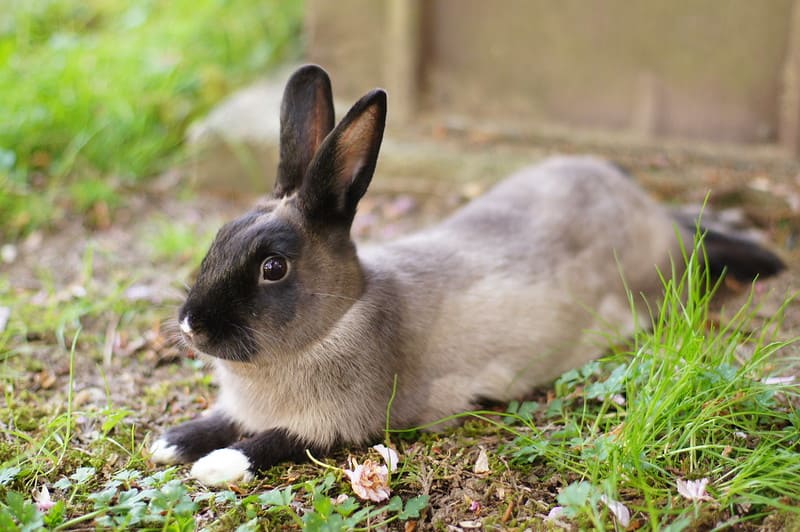Rabbits are known for their cleanliness and meticulous grooming habits. In the wild, they take great care to keep their fur clean and free of parasites. Domesticated rabbits often maintain this grooming behavior, which raises the question: should you give a rabbit regular baths? In this comprehensive exploration of the topic, we will delve into the reasons for and against bathing rabbits, the best practices for rabbit grooming, and the potential risks associated with bathing these small, sensitive animals.

The Natural Grooming Habits of Rabbits
Rabbits are naturally fastidious animals that engage in self-grooming regularly. Here are some key points about their grooming habits:
1. Self-Grooming:
Rabbits are known to groom themselves frequently throughout the day. They use their tongues to clean their fur, much like cats do. Self-grooming helps them stay clean, remove loose fur, and maintain proper insulation.
2. Mutual Grooming:
In a group of rabbits, you may observe them grooming each other as a social bonding behavior. Mutual grooming, or allogrooming, helps establish social hierarchies and strengthens relationships within a group.
3. Saliva and Scent Marking:
When rabbits groom themselves, they spread their scent throughout their fur. This scent marking is a way for rabbits to establish territory and communicate with other rabbits. Excessive bathing can disrupt this natural scent-marking process.
4. Ingestion of Fur:
Rabbits have a unique digestive system that relies on the ingestion of cecotropes (soft feces) to obtain essential nutrients. During self-grooming, they may ingest some fur, which is typically passed through their digestive system without issues.
Reasons for Bathing a Rabbit
While rabbits are generally excellent self-groomers, there are specific situations where giving a rabbit a bath may be necessary or beneficial:
1. Health Issues:
In some cases, rabbits may develop health conditions that affect their ability to groom themselves properly. Arthritis, obesity, or dental issues can make it difficult for a rabbit to reach all areas of their body, leading to matting or soiling of their fur.
2. Dirty or Soiled Fur:
If a rabbit gets into something messy or soiling, such as mud or a sticky substance, it may be necessary to give them a bath to remove the foreign material.
3. Medical Treatments:
In certain situations, a veterinarian may recommend bathing a rabbit as part of a treatment plan. For example, if a rabbit has skin issues or external parasites, bathing with a medicated shampoo may be necessary.
4. Long-Haired Breeds:
Some long-haired rabbit breeds, like Angoras, may require occasional baths to prevent matting and to keep their fur clean and healthy.
5. Showing Rabbits:
Rabbits that are shown in competitions may need to be bathed before the event to ensure they meet the grooming standards of the show.
It’s important to emphasize that bathing a rabbit should be a rare and well-justified occurrence. In most cases, their natural grooming behavior is sufficient to maintain cleanliness and good health.

The Risks of Bathing a Rabbit
Bathing a rabbit, even when necessary, can be a delicate and potentially risky process. There are several risks and challenges associated with bathing rabbits:
1. Stress and Fear:
Rabbits are easily stressed and frightened animals. Being immersed in water and handled during a bath can be highly stressful for them. This stress can lead to physical and emotional health issues, such as GI stasis or behavioral changes.
2. Hypothermia:
Rabbits are sensitive to temperature changes, and bathing them in cold water or not drying them properly can lead to hypothermia, a potentially life-threatening condition.
3. Skin Injuries:
The rabbit’s skin is delicate and prone to injury. Scrubbing too vigorously or using harsh shampoos can cause skin irritation or damage.
4. Inhalation of Water:
Rabbits have a natural fear of water, and if they become panicked during a bath, they may inhale water, which can lead to respiratory issues.
5. Loss of Scent Marking:
As mentioned earlier, rabbits use grooming as a way to mark their territory and communicate. Excessive bathing can strip away their natural scent, potentially causing stress and territorial issues.
6. Digestive Disruption:
Rabbits ingest fur during grooming, which is typically passed through their digestive system. Stress from a bath, especially if it’s not done properly, can disrupt their gastrointestinal tract, leading to problems like GI stasis.
How to Safely Bathe a Rabbit
If you’ve determined that a bath is necessary for your rabbit due to health or cleanliness reasons, it’s essential to take the utmost care to minimize stress and potential risks. Here’s a step-by-step guide to safely bathe your rabbit:
Step 1: Gather Supplies
Before you begin, assemble all the necessary supplies. You’ll need:
- A small plastic tub or basin (avoid using the sink or a full-size bathtub)
- Lukewarm water
- A rabbit-safe shampoo (preferably one recommended by a veterinarian)
- Towels
- A non-slip mat or towel to place in the tub for your rabbit to stand on
- A jug or pitcher for rinsing
Step 2: Prepare the Bath Area
Find a quiet, warm, and draft-free area for the bath. Ensure there are no distractions, loud noises, or sudden movements that can startle your rabbit.
Step 3: Fill the Tub
Fill the plastic tub with about 1-2 inches of lukewarm water. The water should be shallow enough that your rabbit can stand comfortably but deep enough to reach their belly if necessary.
Step 4: Place the Rabbit in the Tub
Gently place your rabbit in the tub, ensuring that they have secure footing on the non-slip surface.
Step 5: Wet the Fur
Using a jug or pitcher, gently pour lukewarm water over your rabbit’s body. Be cautious not to get water in their ears or eyes. Gradually wet the fur and allow it to become thoroughly soaked.
Step 6: Apply Shampoo (if Necessary)
Only use a rabbit-safe shampoo recommended by a veterinarian. Apply a small amount of shampoo to your hands and gently massage it into the fur. Avoid the head and facial area. Be extremely gentle to prevent skin irritation.
Step 7: Rinse Thoroughly
Using the jug or pitcher, rinse your rabbit’s fur thoroughly. Ensure that all traces of shampoo are removed. It’s essential to be meticulous in rinsing to prevent any residue that can irritate the skin.
Step 8: Dry Your Rabbit
Use soft towels to pat your rabbit dry. Ensure they are completely dry, especially in colder weather, to prevent hypothermia. You can use a hairdryer set to the lowest heat setting to speed up the drying process, but keep a safe distance from the rabbit and avoid using hot air.
Step 9: Comfort and Monitor
After the bath, place your rabbit in a warm, quiet area to recover. Offer treats and comforting pets to reassure them. Monitor your rabbit closely for any signs of stress, illness, or respiratory issues in the hours following the bath.

Alternatives to Bathing
Given the risks and potential stress associated with bathing a rabbit, it’s worth considering alternative methods to address hygiene and grooming issues:
1. Brushing:
Regular brushing is an excellent way to prevent matting and remove loose fur. It also mimics the mutual grooming rabbits engage in and can be a bonding experience.
2. Spot Cleaning:
For small soiled areas or substances that may stick to your rabbit’s fur, it’s often more practical and less stressful to use a damp cloth or a wet wipe for spot cleaning.
3. Professional Grooming:
For long-haired rabbit breeds or rabbits with severe matting, consider seeking professional grooming services. Professional groomers are experienced in handling rabbits and can minimize stress during the grooming process.
4. Healthcare Consultation:
If your rabbit’s grooming issues are related to health problems, consult with a veterinarian for proper diagnosis and treatment. Addressing the underlying health issue may resolve the grooming problem.
Preventative Care
To maintain your rabbit’s cleanliness and overall health, there are several preventative care measures you can take:
1. Provide a Clean Living Space:
Ensure your rabbit’s enclosure is kept clean and dry to reduce the risk of soiling their fur. Regularly change bedding and litter.
2. Balanced Diet:
A well-balanced diet that includes a lot of hay will promote healthy digestion and reduce the likelihood of diarrhea or soiling.
3. Exercise and Mental Stimulation:
Encourage your rabbit to exercise and engage in mental stimulation through toys and a spacious living area. A healthy, active rabbit is more likely to groom itself effectively.
4. Regular Health Check-ups:
Visit a rabbit-savvy veterinarian for regular health check-ups. Early detection and treatment of health issues can prevent grooming problems.
5. Spaying/Neutering:
Spaying or neutering can improve a rabbit’s grooming behavior by reducing hormonal influences. It can also prevent urine spraying, which may soil the fur.
Conclusion
In conclusion, giving a rabbit regular baths is generally unnecessary and can be stressful and risky for these sensitive animals. Rabbits are naturally skilled self-groomers, and their meticulous grooming habits keep their fur clean and healthy.
However, there are specific situations where a bath may be required, such as when a rabbit has health issues that affect their grooming or when they encounter dirty or soiling substances. In such cases, it’s crucial to follow a careful and gentle bathing process to minimize stress and potential risks.
In most cases, maintaining good rabbit hygiene involves preventative care, such as providing a clean living environment, a balanced diet, and regular health check-ups. Additionally, regular brushing and spot cleaning can help prevent grooming issues and maintain a clean and happy rabbit.
Ultimately, the well-being of your rabbit should be the top priority, and their natural grooming instincts should be respected and supported whenever possible.
